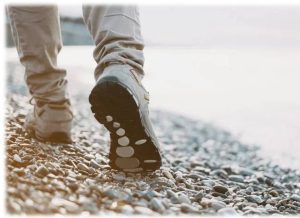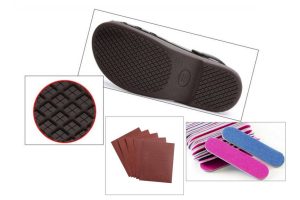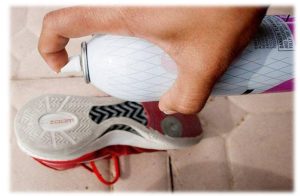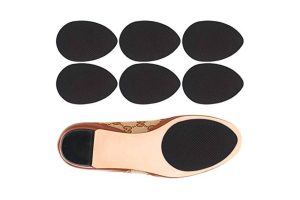How to Add Grip to Shoes (5 Proven Ways)
Although serious workplace falls are commonly associated with industries like construction, workers within any occupation can slip and fall while working. Walking in slippery shoes is a leading cause of slips, falls, and injuries at the workplace. Once older shoes get a bit worn, they might become slippery. The outsoles of new shoes can also be slippery particularly if they do not have enough grip. Happily, there are several methods to make your work shoes less slippery. Here, we will give you the top 5 tips on how to add grip to shoes so you do not have to slide and swerve in your beloved shoes whether new or old.
See also: What are Non-Skid Shoes?
5 Ways to Make Shoes Less Slippery
1. Add extra grip to the outsole by walking

If your brand new shoes feel slippery, it may be because the outsoles are excessively smooth. One easy method to make your new work shoes grippier is by wearing them around your home for some time. As you walk around in the shoes, the outsoles will roughen up thereby increasing the shoe’s slip resistance.
Do not expect immediate results. You may have to walk around in the shoes for a few weeks. However, the more you wear the shoes the quicker you achieve your desired result. While this method works fantastically well, there is just one caveat. Avoid wearing your slippery new shoes when performing activities like walking on oily surfaces, dancing, and the like. This is to ensure you do not fall and hurt yourself.
2. Scrape the outsoles on coarse surfaces

Another fantastic method to add a bit more grip to the outsoles of your new shoes is by grabbing each shoe and scraping its sole on a rough surface. Surfaces like concrete, boulders, rocks, gravel, and walkways will work great for this purpose. The coarser the surface, the better results you will achieve. If you do not want to use your hands, you will achieve similar results by wearing the shoes and walking around on coarse surfaces.
3. Use sandpaper or nail file

You can also use an abrasive such as sandpaper to wear down the soles of your new pair of work shoes. To do this, grab one of the shoes and continuously stroke the slickest sections of the sole using 50-grit sandpaper. Do this until the sole feels coarser and more textured.
If you do not have access to sandpaper, you can also achieve similar results using a nail file. Use the nail file to scrape the smooth sections of the sole that touches the ground to make them coarser. If you prefer to use a nail file, a metal file will give you better results as it is sturdier and more convenient.
See also: How to Choose the Right Shoes for Your Feet
4. Use traction spray

Do your older shoes disappoint you because the outsoles have lost their grip? If you answered yes, you can add a bit more grip to the soles by using a reliable traction spray, sometimes referred to as grip spray. There are several different types of traction sprays in the market but not all are created equal. The type of grip spray you purchase should depend on the level of slip resistance you desire. You can select between heavy grip sprays and medium grip sprays.
No special skill is required to use these products. All you have to do is spray the product on the underside of your shoes. Let the shoes sit for a while to dry properly before you wear them. Remember to read the user guidelines included in the package before you apply the product to your shoes.
5. Try grip pads

Adding material such as grip pads to the underside of older shoes is also a great way to boost the shoes’ slip resistance. Grip pads are textured materials that you can affix to the soles of slippery shoes using an adhesive. Some grip pads are self-adhering so they do not require an external adhesive coating.
These products are comparatively inexpensive to buy and some are offered in a multipack. This can come in handy for those times you need to change a worn-out pad.
